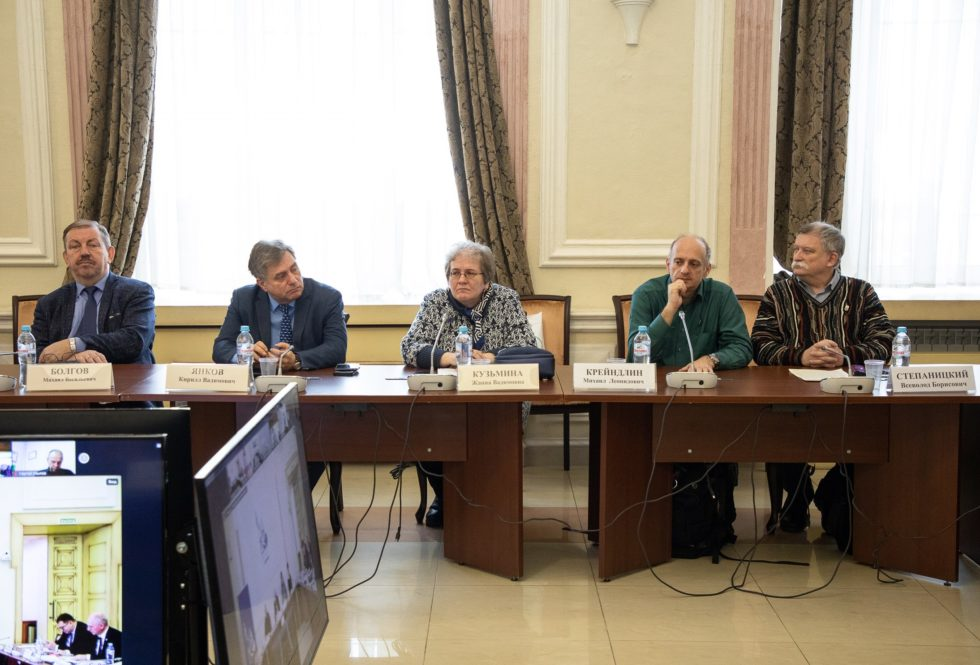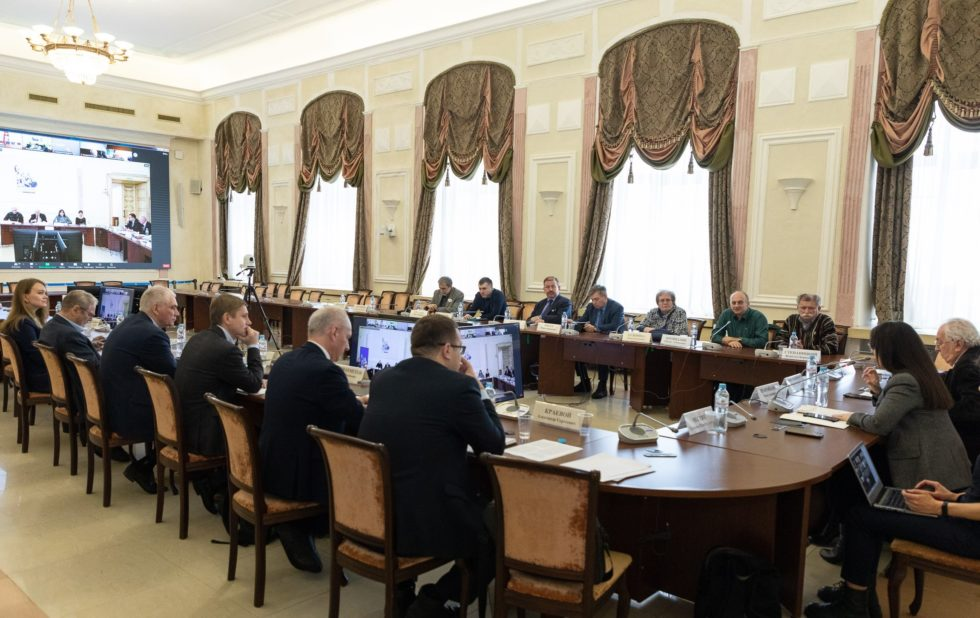
A round table was held at the Public Chamber of the Russian Federation, during which threats to natural complexes and objects and issues of ensuring environmental safety in connection with plans for the construction of the Selemdzhinskaya and Nizhne-Zeyskaya hydroelectric power stations in the Amur region were discussed.
The event was organized by the Commission on Ecology and Sustainable Development of the Public Chamber of the Russian Federation together with the International Public Organization “Expert Council on Nature Reserves”.
The round table was attended by well-known scientists and environmental experts, as well as representatives of PJSC RusHydro, the Ministry of Natural Resources of Russia, Rosvodresursy, Rosprirodnadzor, the Ministry of Energy of Russia, JSC Lenhydroproject, and the Association "Hydropower of Russia".
In addition to environmental risks, the round table discussed the socio-economic consequences of this construction and alternative options for countering extreme floods, subject to the preservation of biodiversity and ensuring environmental safety.
Viktor Danilov-Danilyan, corresponding member of the Russian Academy of Sciences, Doctor of Economic Sciences, professor, scientific director of the Institute of Water Problems of the Russian Academy of Sciences, co-chairman of the Expert Council on Nature Reserves, drew attention to the fact that among the existing options for flood control and development of energy resources, the construction of the Selemdzhinskaya and Nizhne-Zeyskaya hydroelectric power stations are not only the most expensive, but also the most environmentally hazardous. According to Danilov-Danilyan, the problem is very complex, interdisciplinary and requires a comprehensive analysis; it needs to be brought to a much wider scientific and public discussion. “This meeting is only the first in a series that are absolutely necessary to make a decision that does not promise big troubles for our descendants, for which they will scold us,” he emphasized. He also recalled the conclusion of the International Energy Agency that hydro construction in the 21st century is no longer as important economically as it was in the 20th century.
Sergei Podolsky, senior researcher at the Institute of Water Problems of the Russian Academy of Sciences, deputy director for scientific work of the Zeya Nature Reserve, candidate of geographical sciences, member of the Expert Council on Nature Reserves, especially noted that as a result of the construction of the mentioned hydroelectric power stations, the state nature reserve "Norsky" and the federal reserve "Orlovsky" will lose their environmental significance. Key habitats of 29 rare bird species will be destroyed, many of which are listed in the Red Book of the Russian Federation - among them the Far Eastern stork, black stork, black crane, fish owl and others; if the Selemdzhinskaya hydroelectric power station is created, their population groups will be on the verge of extinction. In addition, the basin of the middle reaches of the Selemdzha and Zeya rivers is the only place in Russia where massive seasonal crossings of Siberian roe deer across large rivers occur. The result of the construction of new hydroelectric power stations will be the virtual destruction of the last large migratory population of Siberian roe deer in the country. The speaker also drew attention to the negative social consequences of the construction of the Selemdzhinskaya and Nizhne-Zeyskaya hydroelectric power stations - significant areas of the most productive agricultural and hunting lands will be flooded, and many villages will be liquidated. Podolsky presented alternative options for the location of hydroelectric power stations that meet environmental safety considerations. He also proposed focusing efforts not on combating rare extreme floods, which are a characteristic natural feature of the Amur region, but on early prevention of their negative social consequences.
Vyacheslav Rozhnov, Academician of RAS, Doctor of Biological Sciences, Professor, President of the Theriological Society of the Russian Academy of Sciences, member of the Bureau of the Expert Council on Nature Reserves, in his speech, emphasized the uniqueness of the migratory population of roe deer inhabiting the Amur region. He expressed concern about the threat of extinction of this population due to the construction of a hydroelectric power station, as well as its consequences for the Amur tiger restoration program in this region, where roe deer are an extremely important component of the tiger's food supply. Academician Rozhnov generally drew attention to the negative impact of dams on biological diversity due to the flooding of large areas. According to Rozhnov, it is necessary to seek a compromise in matters of energy development in order to ensure a decent life for people and the preservation of natural heritage.
Kirill Yankov, head of the laboratory of the Institute of National Economic Forecasting of the Russian Academy of Sciences, Candidate of Economic Sciences, member of the Expert Council on Nature Reserves, addressed the management and economic side of the planned construction of the Selemdzhinskaya and Nizhne-Zeyskaya hydroelectric power stations. He noted that there are other ways for the state to respond to the problem of floods - for example, the implementation of a comprehensive flood control program. This is more complex than building a hydroelectric power station, but reduces environmental and social costs. The expert noted that the Amur region today is an energy-rich region, electricity is exported to China, and gave examples of alternative ways to fill the shortage of generating capacity in the event of a potential energy shortage in the Amur region. Yankov also drew attention to the transport function of the Zeya River, which will be disrupted by the construction of reservoirs: the city of Zeya does not have a railway, and huge amounts of money will have to be spent on shipping facilities. The expert also noted the damage to fish stocks that would be caused by the construction of the hydroelectric power station.
Boris Voronov, Honored Ecologist of the Russian Federation, Scientific Director of the Institute of Water and Environmental Problems of the Far Eastern Branch of the Russian Academy of Sciences, Doctor of Biological Sciences, Professor, Corresponding Member of the Russian Academy of Sciences, member of the Expert Council on Nature Reserves, recalled that in 1988 the project of the Dagmar hydroelectric station (similar to the discussed Selemdzhinskaya hydroelectric station) did not pass an environmental assessment, including due to the impossibility of finding a solution to preserve the roe deer population. In his opinion, if a hydroelectric power station is built, a significant part of the Siberian roe deer population will die out, and a number of rare species of animals and plants may completely disappear from the corresponding territory. The expert is convinced that it is necessary to solve the problem of floods, but it is necessary to look for alternative, environmentally friendly options - for example, building dams around large populated areas. Voronov emphasized that the natural environment is adapted to floods and people also need to adapt, finding technical solutions that are environmentally acceptable.
Zhanna Kuzmina, chief researcher at the Institute of Water Problems of the Russian Academy of Sciences, Doctor of Geographical Sciences, cited numerous examples of the negative impact of the construction of reservoirs on floodplain ecosystems and their components in different countries and called for abandoning plans for the construction of hydroelectric power stations on lowland rivers.
Vsevolod Stepanitsky, Honored Ecologist of the Russian Federation, co-chairman of the Expert Council on Nature Reserves, drew attention to the fact that such a consequence of the discussed hydraulic construction as the destruction of the last large migrating population of Siberian roe deer contains the signs provided for in Article 358 of the Criminal Code of the Russian Federation - “Ecocide”. And the flooding of part of the Norsky State Nature Reserve (i.e., violation of its regime, resulting in significant damage) are signs provided for in Article 262 of the Criminal Code of the Russian Federation. The expert expressed doubts about the acceptability and permissibility of developing economic projects, the consequences of which obviously contain signs of environmental crimes, noting that specialists should look for technical solutions to pressing socio-economic issues within the boundaries of the legal field.
Mikhail Kreindlin, coordinator of the program for protected areas of the project “Earth Touches Everyone” of the Association “Nature Conservation”, a member of the Bureau of the Expert Council on Nature Reserves, pointed out that the flooding of part of the Norsky Nature Reserve and the Orlovsky Nature Reserve as a result of the implementation of the project violates Russian legislation, which directly prohibits actions that could cause damage to protected areas and disrupt the habitat of animals and plants listed in the Red Book of the Russian Federation. In particular, we are talking about a violation of the federal laws “On Specially Protected Natural Territories”, “On Environmental Protection”, “On Wildlife”. The expert recalled the legislative ban on the seizure of lands of state natural reserves, which would actually occur in the event of flooding of the Norsky Nature Reserve. Kreindlin recalled a similar story with plans for the construction of the Evenki hydroelectric power station, when approximately the same arguments were given - and the construction of which was eventually abandoned, and the problems that were cited as arguments for construction were resolved. The expert pointed out the danger of promoting former Soviet projects under different names - over the past decades, legislation has changed, the network of protected areas has expanded, and new modern technologies have been developed.
Igor Shkradyuk, coordinator of the industrial greening program at the Center for Wildlife Conservation, Candidate of Technical Sciences, named among the priority measures to prevent damage from floods the expansion and restoration of water-intensive natural landscapes - river floodplains and swamps, thoughtful engineering protection of populated areas and the creation of flood control dams that do not block the free flow rivers in times of low water, but retaining large flows of water. And only in last place is the expensive construction of hydroelectric power stations. He also noted that there are places on the tributaries of the Amur for the construction of environmentally acceptable cascades of hydroelectric power stations.
Previously, the International Public Organization “Expert Council on Nature Reserves” sent an appeal to the head of the Government of the Russian Federation in connection with serious threats to natural complexes and objects due to the planned construction of the Selemdzhinskaya and Nizhne-Zeyskaya hydroelectric power stations in the Amur region.


